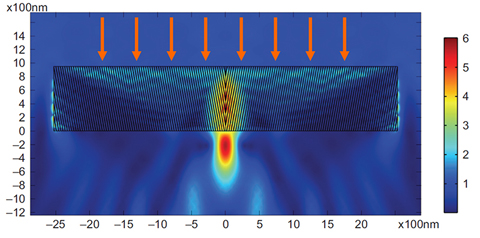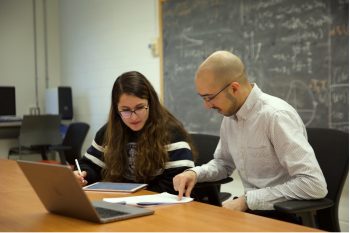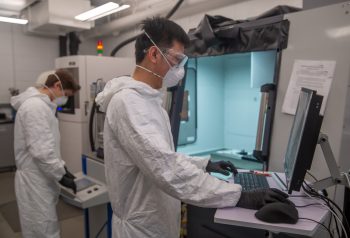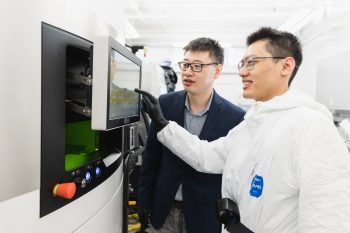Researchers in The Edward S. Rogers Sr. Department of Electrical & Computer Engineering have designed a new way to focus light over extremely short distances, technology with big applications in photovoltaics and optical imaging.
Picture a typical lens, shaped like half a grapefruit lying face-down. Light rays pass through the lens and focus some distance away from its surface. This distance is the focal length. In order to achieve short focal length and focus light relatively close to the lens’s bottom surface, the lens needs to be very thick, and therefore heavy. To gather the maximum amount of energy from the sun and minimize cost, solar panels concentrate light through lenses onto single cells for absorption. Such current solar panel designs are relatively bulky and heavy to accommodate these thick lenses.
But what if you could concentrate light directly on the underside of a solar panel, and make it thin and light at the same time? Metamaterials hold the solution.
Professor George Eleftheriades (ECE) and PhD student Mohammad Memarian (ECE) have demonstrated a way to stitch together a class of light-channeling metamaterials such that light is funneled to focus much closer to the exit surface of the flat lens.
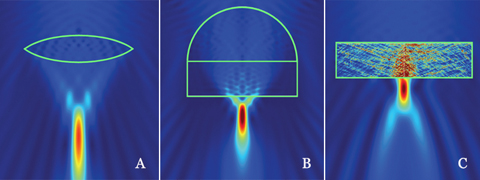
“It works like a sink full of water, with all the light flowing into the drain in the middle,” said Eleftheriades. “Nobody’s done this before, and the reviews were very enthusiastic.”
“What’s attractive about this is its broad impact — everyone can see why it’s important and how we can use it,” said Memarian. “I’m hoping to follow this up, and I think it’s valuable to take this further and apply it either to solar cells or to other ideas that we have.”
This work was published in the Nov. 22, 2013 issue of the online Nature journal Light: Science & Applications, and since its publication has been the most-downloaded paper from the journal. This work received support from the Natural Sciences and Engineering Research Council of Canada and Defence Research and Development Canada.
